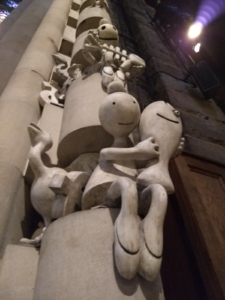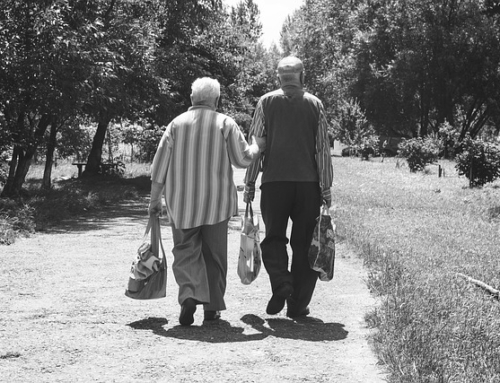By Eddie Pipkin
When I was in New York a couple of weeks ago, I happened to end up at the Cathedral of St. John the Divine, the home of the Episcopal Diocese of New York. Although it is the largest cathedral  in North America, and although it has a rich history and architectural backstory, I had never seen it. A friend’s middle school chorus was performing there, and I happened to be in town. The acoustics are amazing, and it turns out the Cathedral hosts choirs and choral groups from throughout the country—in fact, they encourage these visits. It’s part of their mandate to provide an active destination for the arts, all of the visual and theatrical arts. This community engagement, including vibrant artistic engagement, is part of their stated vision.
in North America, and although it has a rich history and architectural backstory, I had never seen it. A friend’s middle school chorus was performing there, and I happened to be in town. The acoustics are amazing, and it turns out the Cathedral hosts choirs and choral groups from throughout the country—in fact, they encourage these visits. It’s part of their mandate to provide an active destination for the arts, all of the visual and theatrical arts. This community engagement, including vibrant artistic engagement, is part of their stated vision.
They feature beautiful stained glass and sculptures in the classical style in their many chapels. They are home to a priceless collection of the historic 17th century Barberini tapestries. The architecture soars (literally) with holy interpretations of stone, wood, and plaster. But one detail caught my attention, tucked in among all this traditional religious imagery: a series of small figures, whimsical, some with cartoonish bodies and spherical emoji-esque heads, some more abstract interpretations of fish skeletons or dollar signs. They were placed throughout the cathedral, but most dynamically in niches along the columns that towered at the corners of the nave. (The Cathedral of St. John is unfinished, and the column edge where the finished and unfinished portions meet leaves a pattern of recessed niches—you can see them in context in lovely detail in these pictures).
These figures were created by New York sculptor Tom Otterness, who specializes in public art placements. Three observations:
- As art, they add an extra layer of existential exploration to the cathedral experience. As I walked through the soaring cathedral space, experiencing the standard God-focused thoughts that such spaces always inspire, they humanized the space in a playful way that encouraged my thoughts to head in interesting, unexpected directions. All ministries have opportunities to use artistic images, drama, poetry, perhaps sculpture or performance, to reimagine our gathering spaces, reinvigorate meeting rooms and group dialogues, and perhaps reorient the “same old, same old” quality of our ministries.
- They represent the ways in which the arts can (and should be) part of our experience as people of faith. Historically speaking, the church was long the center of the arts community. Much of the beautiful art of history was financed by faith communities and reinforced the message of those who would follow Christ. It can be a powerful means to explore our faith (particularly because we learn in different ways). It can be a revelatory way to express feelings beyond words as we grow in faith. It offers an entry into complex social dialogues (the very kinds of debates about social justice issues that should be part of our lives as people of faith).
- They provide an example of the way a local congregation can be committed to points one and two, with a spinoff benefit of a deepened relationship with the local community. The arts are a perfect pathway for inviting the community into our space (literally and figuratively). They can be a conduit for allowing community members to express themselves (their hopes, fears, and dreams), and they can provide a means for us to share our stories with the community in ways that are accessible and move beyond the tired clichés which may cloud their perceptions of who we are.
It is a no-brainer that church folk are in favor of integrating the arts—ask any ministry leader and they will say, “Of course, we should encourage and integrate the arts.” This arts enthusiasm and integration, however, is often limited to two preexisting presumptions:
- The first assumption is that when we are talking about integrating the arts, we are almost always talking about worship arts: using arts during our worship services. This is an excellent idea (and we need lots more of it!), but there are plenty of opportunities in ministries beyond worship to integrate the arts. Most of the writing about worship arts on the internet is geared to churches large enough to have a worship arts professional on staff—and many of the ideas (books, web links, etc.) that focus on this topic are oriented towards congregations with dedicated staff and budgets to make those ideas possible. But I can say without hesitation that no matter the size of your congregation, your specific denomination, or the area of the country in which you live, you have talented, creative, arts-oriented people as part of your community, and they would love to be engaged and put to work.
- Music, music, music. The predominant way in which we engage the arts is through music. As churches, the idea of inspiring music is inextricably intertwined with our understanding of meaningful worship (although I will add a side note that, even having made that statement, our use of music tends to be static and not varied or adventurous). We expend major resources in this one area of the arts. It’s an enormous staff and volunteer focus. It is an intriguing thought exercise to consider how things might be different if we allocated some of those resources to other arts initiatives.
So, here are some ideas for increasing arts engagement:
- There should be people in leadership whose call is to think about this. As noted above, you have creative people as a resource. Put this powerful resource to work by naming it, organizing it, and empowering it. Imagine if your congregation (if every congregation) had a Chief Creative Officer or Community Arts Liaison. That person’s mission would be to give life to this vision of arts integration, working with individual artists, community representatives, and ministry leadership teams.
- We should empower the artists among us. Even if you can’t work as boldly as described above, make a point of knowing who the artists among you are, connecting them with individual ministry leaders as a valued resource, and asking them about their own ideas. Display their work. Let them lead workshops and small groups.
- This is an excellent way to engage the surrounding community. You can provide space for community groups (school groups, civic groups, artist groups) to display their work. You can host art shows that explore relevant topics of faith and social justice. You can host arts festivals. You can display public art that makes faith accessible and celebrates community values.
- It doesn’t have to be overtly religious. Read that last sentence from the paragraph above. Every sculpture doesn’t have to be about Jesus (although some overtly faith-based works stunningly engage social issues, provoke discussion, and prompt a deeper exploration of our what we believe, like Homeless Jesus). Some installations are just fun.
- Technology is opening up new avenues for arts engagement. Social media provides an easy and inexpensive platform for exploring all sorts of imagery and video. You can engage congregation members and at-large community members with challenges to engage a topic through selfies, artistic photography, videos, story sharing, and poetry. This is easy to do and accessible to all in a way that is fresh in history. Take advantage of it! It makes people feel like their voices are valued. It opens up new avenues of understanding. It dramatically builds community. It creates energy!
What are the ways in which your local congregation encourages arts engagement? How have you used the arts to deepen discipleship, engage the local community, create enthusiasm for ministries, or provide outlets for expression by your family of believers? Share your stories (or even the stories in which you tried arts engagement with grand intentions, but the idea fizzled). Feel free to draw a picture, take a photograph, or make a Play-Doh sculpture to illustrate your story! Post your comments and more below.







Leave A Comment